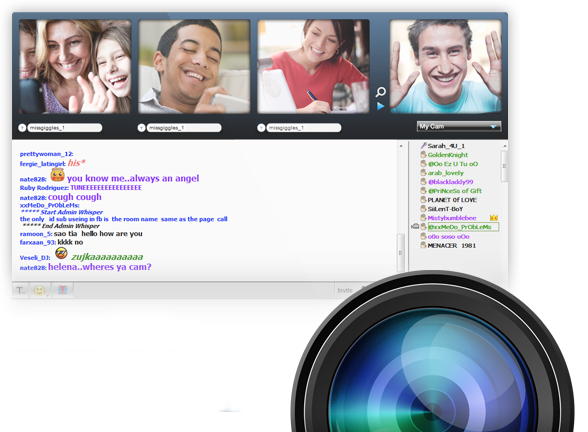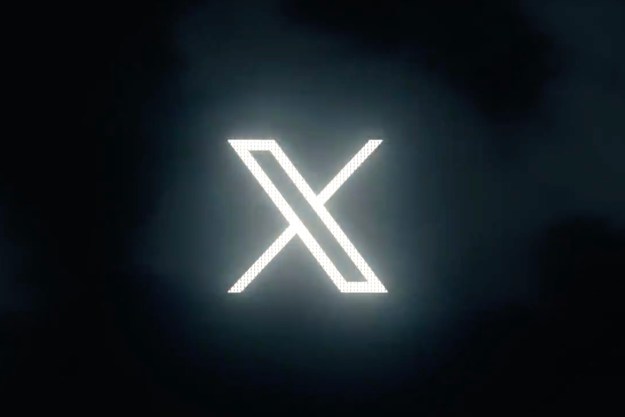 An NSA-sized bomb was dropped last week when newspapers revealed that the U.S. government has been monitoring citizen communication data. By now, most of us have this image burned into our brains:
An NSA-sized bomb was dropped last week when newspapers revealed that the U.S. government has been monitoring citizen communication data. By now, most of us have this image burned into our brains:

A lot of familiar faces were among the sources the NSA has been pulling data from: Microsoft, Yahoo, Google, Apple, AOL, Skype, Facebook, YouTube, and … Paltalk?
Among all of the oh-so-obvious outlets is Paltalk, a company that the NSA has been monitoring since December 2009 – longer than it’s been looking at AOL, Skype, Apple, or YouTube. So what exactly is this little-known app, and why does the United States Government care so much about it?
What is Paltalk?
Paltalk (parent company, AVM Software) is a video chat app and offers the same features that a variety of video chat apps do: Group video calling, mobile video calling, chat rooms. The company is based in New York and has been around for awhile; its initial launch was in 1998.
Paltalk bills itself as “the world’s largest video chat community, with more than four million active members.” According to the company, what sets it apart is its ability to host hundreds of thousands of users at once, “including thousands of people within a single chat room.”
It’s more than just video chat, however. It’s also a text messaging and IM client in the vein of IMO or Whatsapp – a device workaround so you can text internationally and without using up your monthly text limit (if you still have one).
Feature-wise, there’s nothing very notable about Paltalk. It’s a moderately popular option for group chat purposes; it’s a Chrome Web Store option. Perhaps what the app is most well-known is a harrowing story in which one user hanged himself in a group chat room where Paltalk users would insult one another.
Second to this, Paltalk has earned itself something of reputation as a patent troll, having filed a handful of lawsuits against video game developers for violating its “server-group messaging system for interactive applications” patent. The success of these lawsuits has been varied.
All in all, there’s nothing overly significant about Paltalk. It’s one of a million social video chat app communities; it’s not the most popular nor the least.
What does Paltalk say?
Paltalk issued a response regarding the PRISM reports. “We have not heard of PRISM,” Paltalk told us in a statement. “Paltalk exercises extreme care to protect and secure users’ data, only responding to court order as required by law. Paltalk does not provide any government agency with direct access to its servers.”
Like other social apps and sites, Paltalk says that it will comply with the government when necessary. “Paltalk will fully cooperate with law enforcement in investigating or requesting information with respect to suspected criminal or other activity and, notwithstanding any provision herein to the contrary, may release your name and other information to the appropriate authorities for that purpose, with or without subpoena.” This isn’t a surprising or unique Privacy Policy – most of them have that provision. Nothing else about Paltalk’s own policies or terms indicate why the NSA was interested in the information they provide.
It’s not so much anything about Paltalk’s own service that the NSA was interested in, though – it’s who was using it and why. Paltalk is a popular app within the Muslim community, and that apparently lends itself to the NSA’s efforts.
Why Paltalk?
Paltalk is definitely more social than something like Skype: Its chatrooms, which feels so circa 1999, have become globally popular and feature some extremist and religious groups, debates, and organization. People from all over the world come into these chatrooms, and can remain anonymous, if they want.

Last year, terrorists who had plotted to plant an explosion in the London Stock Exchange and U.S. Embrassy were found to be using Paltalk to coordinate. It was also a platform for terrorist supporters.
“Anjem Choudary, founder of the banned group Islam 4 UK, Omar Bakri Mohammed, who caused outrage in Britain by praising the hijackers behind the September 11, 2001 attacks and was banned from re-entering the U.K. in the wake of the 7/7 bombings, and Abdullah el-Faisal, who was deported in 2007, were said to have joined forces to use the site to preach their message around the world,” The Telegraph reported in 2012.
Way back in 2005, there were concerns that radical Islamist groups were using Paltalk to track Christians. “The password protected Arabic website, at the address www.barsomyat.com, features pictures and information about Christians who have been particularly active in debating Muslims on Paltalk,” The New York Sun wrote in 2005. And in 2009, there were actually worries among Israeli Paltalk users that it was being used a spying tool by jihadists.
Not all of the Middle Eastern users on Paltalk were corroborating for these purposes, of course: A 2002 story in the New York Times focused on how Iranian youth were using the site like a chat-friendly blog.
And during the Arab Spring, Paltalk saw a considerable bump in usage – and was even eventually blocked by the Bahrain government when dissidents were using it to organize and send messages.
Alarmist or cautionary?
While Paltalk has shown traces of harboring terrorist activity (or maybe, more accurately, traces of people who talk about terrorist activity), does that make it all that different from a variety of other sites and social apps? Ones that are have a bigger users base and arguably more impact?
You don’t see Reddit on that list, or Twitter (both of which are infamous for protecting user information). Tumblr is missing as well, as is WordPress. There is tons of this stuff all over the Internet. It’s difficult to imagine that Paltalk has more content that the U.S. government wants access to than these sites – but clearly, something has motivated the NSA to be keeping a watchful eye on Paltalk over the past four years.
Whether those motives are justified remains to be seen – and at these early stages of what we know about PRISM, debating that is an exercise in futility (you either think this is a gross abuse of power and injunction of our freedoms or you think it’s a protective measure to keep our country and citizens safe).
But that’s the story of an app that flew under our collective radar for so long, but still managed to attract so much attention from the government. Apparently, the NSA is keeping a watchful eye out for the rest of us.
Editors' Recommendations
- WhatsApp finally lets you edit sent messages. Here’s how to do it
- WhatsApp now lets you control who can see your profile
- Twitter’s new Privacy Center lets you know what’s happening with your data
- What is Libra? Here’s what you need to know about Facebook’s new cryptocurrency
